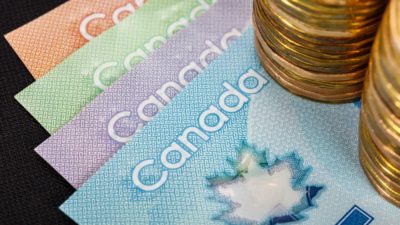This year, the Canada Revenue Agency (CRA) gave generous emergency cash benefits to Canadians who lost their job because of the COVID-19 pandemic. All eligible Canadians got $2,000/month in Canada Emergency Response Benefit (CERB) and Canada Recovery Benefit (CRB) if they earned at least $5,000 in working income last year.
However, the CRA can take back these benefits in April 2021, when you file your 2020 tax returns. Don’t worry. You can stop the CRA from taking back your benefits. Here’s how.
How to stop the CRA from taking back your CERB
The CRA launched the temporary CERB from March 15 to September 26. Anyone who was eligible for CERB can claim the $2,000/month for seven periods, which comes to a maximum of $14,000. If you were eligible during the benefit period and did not claim it, you can do so till December 2. The CRA will give you retroactive payments.
The CRA will add the CERB payments to your 2020 taxable income and claw back some of this amount in the form of income tax. You can stop the CRA from doing so by leveraging the basic personal amount, or BPA, tax credit.
The CRA offers a tax credit called the basic personal amount, or BPA, on which it exempts 15% federal tax. The CERB will add $14,000 to your 2020 taxable income, which equates to a federal tax bill of $2,100. For 2020, you can reduce the 15% federal tax on $13,299 BPA, which comes to $1,984. Hence, your federal tax bill will reduce to $116.
How to stop the CRA from taking back your CRB
The CRA replaced the CERB with the CRB, which offered $2,000/month but deducted 10% tax at source. If you claim the CRB consecutively, you can get up to $5,400 in benefits payments by the end of this year. Now, if your 2020 taxable income adds up to more than $37,000, the CRA will take away the CRB payment at the rate of 50% of the surplus income. Here, your 2020 taxable income includes the $14,000 CERB payment and excludes the CRB payment.
For instance, you earned $43,000 in taxable income in 2020, and you also claimed $5,400 in CRB. The CRA will clawback $3,000 of your CRB payment on the $6,000 surplus income ($43,000-$37,000).
You can stop the CRA from doing so. If your 2020 taxable income adds up to $37,000 after excluding CRB, don’t claim the benefit in November and December as the CRA will claw it back. You can claim the November and December period benefit in January 2021. The CRA gives you up to 60 days to claim retroactive benefits.
Make the most of the CRA benefits
Now that you know that you can even save out on taxes on CERB and CRB, set aside 10% of your benefits payments in a Tax-Free Savings Account (TFSA). The COVID-19 vaccine euphoria has created an opportunity to buy stocks that were badly hit by the pandemic before they surge to the pre-pandemic level. RioCan REIT (TSX:REI-UN) is one such stock. I even recommended it as my top stock pick for November. Here’s why.
The very business of RioCan REIT, which is renting out retail properties to retailers, depends on economic growth. The REIT was hit hard by the pandemic as retail shops closed during the lockdown. Many big brands and small retailers closed their stores permanently.
In the second quarter, its gross rent collection fell to 73.3%, and the committed occupancy rate fell to 96.4%. It deferred rent and applied for Canada Emergency Commercial Rent Assistance (CECRA) for many of its tenants.
Before November, I was concerned about RioCan’s occupancy rate falling drastically. But the REIT, in its third-quarter earnings, reported that its rent collection improved to 93.4%, and many tenants paid their deferred rent. The occupancy rate was slightly lower at 96%, but it has sufficient cash flows to continue paying the current dividends.
Investor corner
RioCan stock has surged 19% this month. It could surge another 50% to the pre-pandemic level in the next two years. If you invest $2,000 in RioCan now, you will earn $334 in annual dividend and $1,000 in capital appreciation in the next two years.








